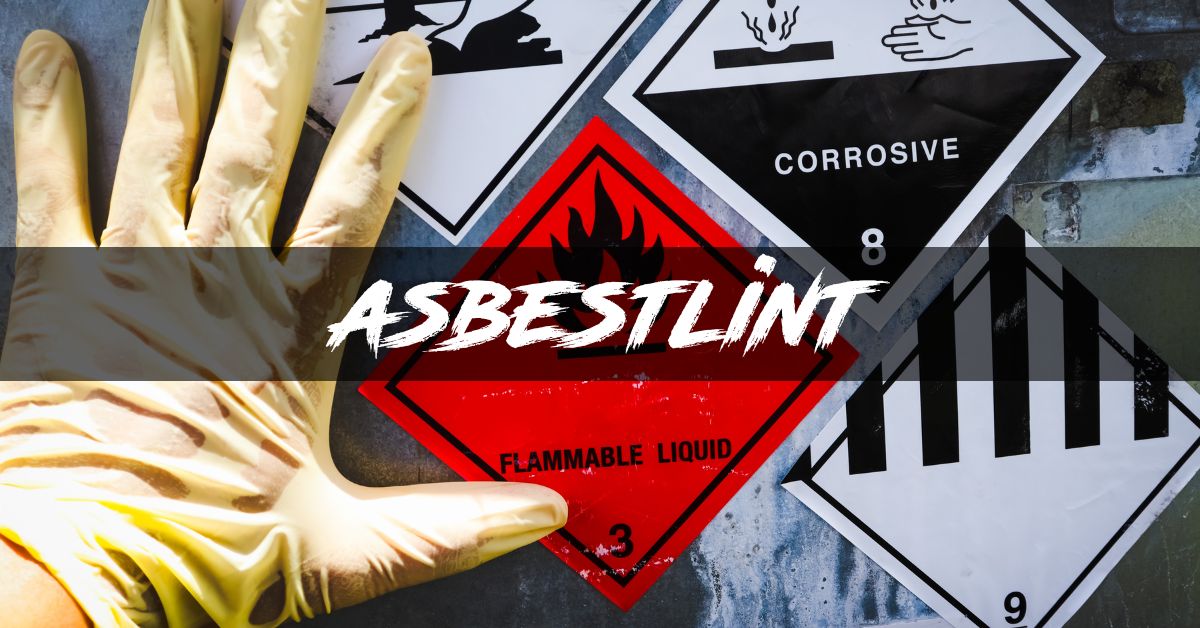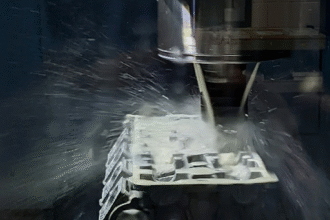When we think about workplace hazards in industrial environments, our minds often jump to the obvious dangers: heavy machinery, chemical spills, or electrical hazards. However, some of the most serious threats are nearly invisible to the naked eye. Asbestlint represents one such danger that continues to pose significant health risks in various industrial settings.
This comprehensive guide will help you understand what asbestlint is, where it’s commonly found, and most importantly, how to protect yourself and your workforce from its harmful effects. Whether you’re a facility manager, safety officer, or industrial worker, understanding this hazard could be crucial for maintaining a safe work environment.
By the end of this article, you’ll have a clear understanding of asbestlint’s properties, health implications, and the essential safety measures needed to manage this industrial hazard effectively.
What Is Asbestlint?
Asbestlint refers to the fine, fibrous particles that become airborne when asbestos-containing materials deteriorate, are disturbed, or undergo mechanical processes in industrial environments. Unlike larger asbestos fibers that may be visible, asbestlint consists of microscopic particles that can remain suspended in air for extended periods.
These tiny fibers are particularly dangerous because of their size and composition. When asbestos materials break down through wear, vibration, or direct disturbance, they release these lint-like particles into the surrounding environment. The particles are so small that they can easily bypass the body’s natural filtration systems when inhaled.
The term “asbestlint” specifically describes the appearance and behavior of these particles, which can accumulate on surfaces, equipment, and ventilation systems much like traditional lint, but with far more serious health implications.
Common Sources of Asbestlint in Industrial Settings
Aging Infrastructure
Many industrial facilities built before the 1980s contain asbestos in various building materials. As these structures age, normal wear and tear can release asbestlint into the air. Common sources include:
- Deteriorating pipe insulation
- Crumbling ceiling tiles
- Worn floor tiles and adhesives
- Aging boiler insulation
- Old electrical components
Manufacturing Processes
Certain industrial operations can generate asbestlint when they involve materials containing asbestos. These processes include:
- Cutting or drilling through asbestos-containing materials
- Demolition or renovation activities
- Equipment maintenance in older facilities
- Grinding or sanding operations on contaminated surfaces
HVAC Systems
Heating, ventilation, and air conditioning systems can both generate and distribute asbestlint throughout a facility. Older HVAC systems may contain asbestos components that deteriorate over time, while the air circulation can spread contaminated particles to previously clean areas.
Health Risks Associated with Asbestlint Exposure
Respiratory Complications
The microscopic nature of asbestlint makes it particularly hazardous to respiratory health. When inhaled, these fibers can penetrate deep into lung tissue, where they may remain for decades. The body’s natural defense mechanisms struggle to remove these persistent fibers, leading to chronic inflammation and scarring.
Workers exposed to asbestlint may experience breathing difficulties, persistent coughing, and chest pain. These symptoms often develop gradually, making early detection challenging.
Long-term Health Consequences
Extended exposure to asbestlint can lead to serious health conditions that may not manifest for 20-40 years after initial exposure. The delayed onset of these diseases makes prevention and early intervention critical for at-risk workers.
The fibrous nature of asbestlint allows it to cause cellular damage over time, potentially leading to genetic changes in affected tissues. This biological process explains why even relatively brief exposures can have lasting health implications.
Vulnerable Populations
Certain groups face higher risks from asbestlint exposure. Workers with pre-existing respiratory conditions may experience accelerated health deterioration. Additionally, individuals who smoke face compounded risks, as tobacco use can significantly amplify the harmful effects of asbestos fiber exposure.
Identifying Asbestlint in Your Workplace
Visual Inspection Challenges
Unlike other workplace hazards, asbestlint is often invisible to the naked eye. However, there are signs that may indicate its presence:
- Dust accumulation that appears unusually fine or fibrous
- White or gray particles on equipment and surfaces
- Deteriorating materials known to contain asbestos
- Areas where asbestos-containing materials have been disturbed
Professional Assessment
The only reliable way to confirm asbestlint presence is through professional testing. Qualified industrial hygienists can collect air and surface samples for laboratory analysis. These tests can detect even minimal concentrations of asbestos fibers and provide accurate assessments of exposure risks.
Regular monitoring is essential in facilities where asbestos-containing materials are present. Professional assessments should be conducted whenever renovation, demolition, or maintenance activities occur in potentially contaminated areas.
Safety Measures and Prevention Strategies
Personal Protective Equipment
When asbestlint exposure is possible, appropriate personal protective equipment becomes essential. Respiratory protection should include high-efficiency particulate air (HEPA) filtered masks or powered air-purifying respirators, depending on the exposure level.
Protective clothing should be disposable and cover all exposed skin. This prevents fibers from contaminating personal clothing and being carried to other areas or taken home inadvertently.
Engineering Controls
Effective ventilation systems represent the first line of defense against asbestlint contamination. Industrial facilities should implement:
- Local exhaust ventilation at potential source points
- HEPA filtration systems for air handling
- Negative pressure environments during high-risk activities
- Regular maintenance and filter replacement schedules
Work Practice Controls
Establishing safe work procedures helps minimize asbestlint generation and exposure. Key practices include:
- Wetting materials before disturbance to reduce fiber release
- Using appropriate tools and techniques for asbestos-containing materials
- Implementing controlled access to contaminated areas
- Establishing decontamination procedures for workers and equipment
Regulatory Compliance and Legal Considerations
OSHA Standards
The Occupational Safety and Health Administration maintains strict regulations regarding asbestos exposure in industrial settings. These standards establish permissible exposure limits, require regular monitoring, and mandate specific safety procedures when asbestos-containing materials are present.
Employers must provide training, medical surveillance, and appropriate protective equipment for workers at risk of asbestlint exposure. Failure to comply with these regulations can result in significant penalties and legal liability.
Documentation Requirements
Proper record-keeping is essential for regulatory compliance and worker protection. Industries must maintain detailed records of:
- Air monitoring results
- Worker training and medical examinations
- Material assessments and abatement activities
- Incident reports and exposure assessments
Emergency Response Procedures
Immediate Actions
If asbestlint release is suspected or confirmed, immediate action is crucial. Workers should evacuate the affected area, and access should be restricted until professional assessment can occur. Emergency response should include notifying appropriate supervisors and safety personnel.
Contaminated clothing and equipment should be handled according to established protocols to prevent further spread of fibers.
Long-term Response
Following an asbestlint exposure incident, comprehensive cleanup and assessment procedures must be implemented. This typically involves professional abatement contractors who specialize in asbestos remediation.
Air monitoring should continue until clearance levels are achieved, and affected workers should receive medical evaluation to assess potential health impacts.
Creating a Safer Industrial Environment
Understanding asbestlint and its dangers represents just the first step in protecting industrial workers from this hidden hazard. Effective management requires ongoing commitment to safety protocols, regular training, and continuous monitoring of workplace conditions.
The investment in proper safety measures, professional assessments, and worker protection far outweighs the potential costs of exposure-related health issues and regulatory violations. By taking proactive steps to identify and control asbestlint hazards, industrial facilities can create safer working environments for all employees.
Remember that asbestos-related diseases are entirely preventable through proper safety measures. If you suspect asbestlint contamination in your workplace, don’t wait—contact qualified professionals immediately to assess the situation and implement appropriate safety measures. Your health and the health of your coworkers depend on taking these hazards seriously and acting decisively to address them.

















